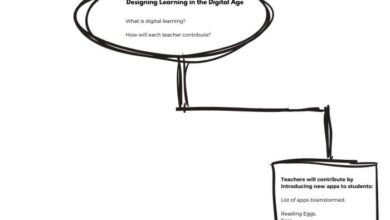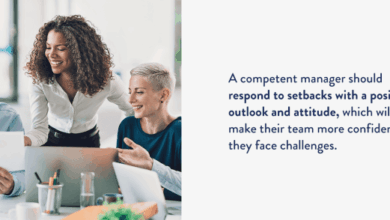
How to have more efficient meetings is crucial for any team or organization. Inefficient meetings waste time and resources, leading to frustration and missed deadlines. This comprehensive guide will equip you with the tools and strategies to transform your meetings from unproductive time sinks to productive problem-solving sessions.
We’ll explore everything from defining meeting efficiency and planning effective agendas to facilitating productive discussions, documenting outcomes, and leveraging technology. Learn how to address common challenges and create a framework for maximizing your meeting’s impact.
Defining Meeting Efficiency: How To Have More Efficient Meetings

Meetings are a cornerstone of modern work, yet they often fall short of their potential. Understanding what constitutes an efficient meeting, identifying the pitfalls, and establishing a framework for evaluation are crucial to maximizing productivity and minimizing wasted time. Efficient meetings are not just about adhering to a schedule; they’re about achieving tangible outcomes and fostering collaboration.
A Comprehensive Definition of Efficient Meetings
Efficient meetings are characterized by a clear purpose, focused discussion, and tangible results. They are meticulously planned, with pre-defined objectives and a structured agenda. Attendees are prepared, and the meeting adheres to a time limit, preventing unnecessary delays and digressions. The outcome of an efficient meeting is a shared understanding, action items, and a sense of progress toward common goals.
Essentially, an efficient meeting achieves its intended objectives with minimal wasted time and resources.
Key Characteristics of an Efficient Meeting
The core components of an effective meeting include a well-defined purpose, a prepared agenda, a focused discussion, and clearly defined action items. Attendees should come prepared with any necessary information, and the meeting facilitator should guide the discussion toward the established objectives. A clear understanding of the meeting’s objectives, along with an agenda, ensures that time is used productively.
Effective meetings should be concise, adhering to a pre-determined timeframe, and conclude with a clear summary of decisions and assignments.
Common Pitfalls That Hinder Meeting Efficiency
Several factors can derail a meeting’s effectiveness. Lack of preparation by attendees, a poorly defined agenda, or a lack of clear objectives can lead to unproductive discussions. A lack of time management, uncontrolled discussions, and insufficient follow-up on action items contribute to wasted time. Meetings that lack structure and clear roles for participants often become inefficient and unfocused.
This includes a lack of a facilitator to guide the discussion and ensure the meeting stays on track.
Comparing and Contrasting Efficient and Unproductive Meetings
Efficient meetings yield tangible results, fostering collaboration and progress toward goals. Attendees leave with a clear understanding of their roles and responsibilities. Action items are documented, and follow-up mechanisms are in place to ensure accountability. Unproductive meetings, conversely, often lack a clear purpose, leading to aimless discussions and a sense of frustration. Attendees may leave with little to no understanding of their roles or responsibilities.
Action items are vague or absent, and follow-up is infrequent, resulting in a lack of progress. An efficient meeting is characterized by a clear sense of direction and outcome, whereas an unproductive meeting often feels disorganized and aimless.
A Framework for Evaluating Meeting Effectiveness
Evaluating meeting effectiveness requires a structured approach. A pre-meeting checklist should include defining the meeting’s objectives, establishing a clear agenda, and identifying attendees. During the meeting, focus on sticking to the agenda, maintaining a concise discussion, and documenting action items. Post-meeting, assess the meeting’s success by measuring whether objectives were achieved, whether action items were completed, and the overall level of satisfaction among attendees.
This evaluation should provide insights for future meetings, leading to continuous improvement. The framework should involve a structured approach for pre-meeting preparation, during-meeting conduct, and post-meeting evaluation.
Example: A project team meeting to discuss the next phase of development. An efficient meeting would focus on specific tasks, deadlines, and resource allocation. An unproductive meeting would wander off topic and lead to no tangible results.
An effective framework for evaluation would include metrics for task completion, budget adherence, and team member satisfaction.
Planning for Effective Meetings
Planning effective meetings is crucial for achieving organizational goals. A well-structured meeting, with clear objectives and actionable plans, saves time and resources, leading to more productive outcomes. Without careful preparation, meetings can become unproductive time sinks, leading to frustration and wasted effort.A well-defined plan, including pre-meeting preparation, clear objectives, and a structured agenda, is paramount for efficient meetings.
This proactive approach ensures that meetings remain focused, productive, and ultimately contribute to achieving the desired results.
Pre-Meeting Preparation Checklist
Careful planning before a meeting is essential for its success. A well-defined checklist ensures that all necessary elements are addressed before the meeting begins. This proactive approach saves time during the meeting, allowing for more focused discussion and decision-making.
- Define the meeting’s purpose: Clearly articulate the reason for the meeting, outlining specific objectives and desired outcomes. This will serve as a guiding principle throughout the entire meeting process.
- Identify key participants: Determine who needs to be present to contribute meaningfully to the discussion and decision-making. Only invite individuals whose presence is critical to the meeting’s objectives.
- Prepare supporting materials: Gather any relevant documents, data, or visuals that will facilitate the discussion and decision-making. This ensures that the meeting remains grounded in factual information.
- Establish a clear agenda: Artikel the topics to be discussed and allocate time for each item. This helps maintain focus and ensures that all necessary items are covered within the allotted time.
- Send out meeting invitations in advance: Provide a detailed agenda and any required materials to attendees well in advance of the meeting to allow them to prepare adequately.
Clear Meeting Objectives
Defining clear objectives is essential for a productive meeting. A meeting without a clear objective runs the risk of becoming a disorganized discussion, wasting valuable time. Clearly defined objectives provide a framework for discussion and decision-making.
- Specific objectives: Define precise, measurable, achievable, relevant, and time-bound (SMART) objectives for the meeting. These objectives should be aligned with overall organizational goals.
- Actionable steps: Establish clear action items derived from the objectives, assigning responsibilities to individuals. This ensures that the meeting’s outcomes are translated into tangible actions.
- Measurable outcomes: Define how the meeting’s success will be measured. This will allow for an assessment of the meeting’s effectiveness and impact.
Determining Appropriate Attendees
Careful consideration of attendees is crucial for maximizing meeting effectiveness. A meeting with the wrong attendees can be inefficient and unproductive.
- Identify essential contributors: Determine who has the knowledge, expertise, or decision-making authority relevant to the meeting’s objectives.
- Limit the number of participants: Too many participants can hinder the discussion and decision-making process. Focus on the minimum number of attendees needed to achieve the meeting’s goals.
- Consider diverse perspectives: Ensure that a variety of viewpoints are represented in the meeting. This enhances the quality of discussions and potential solutions.
Effective Meeting Agendas
A well-structured agenda is the cornerstone of a productive meeting. A clear agenda ensures that the meeting stays focused on its objectives.
| Item | Description |
|---|---|
| Purpose | State the meeting’s objective. |
| Attendees | List participants. |
| Timeline | Indicate meeting duration. |
| Agenda Items | List topics to be discussed. |
| Action Items | Define tasks and assignees. |
Facilitating Productive Discussions

Meetings are often the lifeblood of any team or organization. Effective meetings, however, require careful planning and facilitation. Beyond the initial planning and agenda setting, the ability to guide the discussion, keep it on track, and encourage participation is crucial for maximizing output and achieving desired outcomes. This section focuses on strategies to transform meetings from time-wasting exercises into productive brainstorming sessions.Facilitating a productive discussion goes beyond simply reading the agenda.
It involves creating a safe and supportive environment where everyone feels comfortable sharing their ideas and insights. This includes active listening, clear communication, and a structured approach to managing time and potential disagreements.
Keeping Discussions Focused
Maintaining focus during a meeting is essential for achieving objectives. Attendees often drift off-topic, leading to tangents and wasted time. A facilitator can prevent this by clearly articulating the meeting’s goals and objectives at the outset. This provides a framework for the discussion and helps participants stay aligned with the purpose of the meeting. Using clear and concise language to define the key issues is also important.
This avoids ambiguity and keeps the conversation on track.
Encouraging Active Participation
Active participation from all team members is vital for a successful meeting. A facilitator can foster this by encouraging open dialogue, soliciting input from various individuals, and making sure everyone feels heard. Techniques like asking open-ended questions, creating a safe space for different perspectives, and acknowledging contributions are all effective strategies. For example, assigning specific roles to team members or breaking the group into smaller subgroups to address different facets of the issue can help broaden input.
This approach can also help identify areas of consensus and disagreement, allowing the group to work collaboratively towards resolutions.
Managing Time Effectively During Meetings
Time management is critical for keeping meetings on schedule and ensuring that every agenda item receives the necessary attention. A facilitator should use timeboxing, a technique of allocating specific time slots for each discussion point. A well-structured agenda with realistic time allocations for each topic is a must. Using visual aids like timers or projected timelines can help participants stay mindful of time constraints.
Facilitators can also employ techniques such as summarizing key points and moving on to the next topic if a discussion becomes too lengthy.
Handling Disagreements Constructively
Disagreements are inevitable in any group discussion. A skilled facilitator should encourage respectful debate and active listening during these disagreements. Creating a culture of open communication and constructive feedback helps to resolve conflicts peacefully. A facilitator can guide the discussion by focusing on the issue at hand, separating the person from the problem, and reframing opposing viewpoints as different perspectives.
It’s important to avoid taking sides and remain neutral to maintain a productive environment. Seeking common ground and exploring compromise solutions can also lead to mutually beneficial outcomes.
Planning efficient meetings is key, but sometimes the most unexpected things can disrupt the process. Just like how a lost iPhone can attract a whole host of unsavory characters, lost iPhones bring scoundrels, sharks, and shysters out of the woodwork , unnecessary tangents and distractions can derail a productive meeting. So, clear agendas and sticking to the time limit are crucial to keeping things focused and moving forward.
Meeting Facilitation Styles
Different facilitation styles can impact the overall effectiveness of a meeting. The table below highlights the pros and cons of different approaches.
| Style | Pros | Cons |
|---|---|---|
| Facilitative | Encourages diverse perspectives, fosters collaboration, and promotes inclusivity. | Can be slower than other styles, and may lead to less decisive outcomes. |
| Directive | Efficient for decisions that need to be made quickly. Provides clear direction. | May discourage input from team members and stifle creativity. |
| Delegative | Empowers team members, fosters ownership, and can generate innovative solutions. | Can lead to unclear action items and potential duplication of effort if not properly managed. |
Actionable Outcomes and Follow-up
Meetings are only effective if the decisions made translate into tangible actions. A clear follow-up process ensures that everyone understands their roles and responsibilities, and that progress is tracked effectively. This crucial step often gets overlooked, but it’s essential for maximizing the return on investment from each meeting.Effective follow-up mechanisms are critical for turning meeting discussions into tangible results.
They prevent valuable insights from getting lost in the shuffle and ensure that everyone is on the same page regarding next steps.
Planning efficient meetings is key, especially when navigating complex projects like network integrations. For example, a well-structured meeting agenda can streamline discussions, helping you avoid the pitfalls of wasted time. This is especially crucial when facing the challenges of surviving the network integration ordeal. Clear roles and pre-defined outcomes are essential for any meeting, but even more so when dealing with potential technical snags and conflicting priorities.
Ultimately, these techniques will help you keep meetings on track and productive.
Documenting Decisions and Action Items
A well-structured system for documenting decisions and action items is key to ensuring accountability and clarity. This includes capturing not just
- what* was decided but also
- who* is responsible for
- what* and by
- when*. This process ensures everyone involved has a clear understanding of their commitments.
- Use a shared document, spreadsheet, or project management tool. This central repository ensures everyone has access to the same information.
- Clearly define action items. Each item should be specific, measurable, achievable, relevant, and time-bound (SMART). Vague action items lead to confusion and missed deadlines.
- Assign responsibility to specific individuals. Clearly identifying the assignee ensures ownership and accountability for completing the task.
- Include a due date for each action item. A realistic timeframe prevents delays and allows for proper scheduling.
Assigning Tasks and Responsibilities
Effective task assignment requires careful consideration of individual strengths and expertise. A well-defined process ensures that the right people are tackling the right tasks.
- Match tasks to individuals based on their skills and experience. This increases the likelihood of successful task completion.
- Use a task management tool to assign tasks and track progress. Tools like Trello, Asana, or even a simple spreadsheet can streamline this process.
- Set clear expectations for each task. Include any necessary resources or information required for the assignee.
Importance of Clear Communication After the Meeting
Post-meeting communication is critical for maintaining momentum and ensuring everyone is aligned. This involves disseminating action items, deadlines, and any relevant updates.
- Send a concise follow-up email or document summarizing key decisions and action items.
- Keep communication channels open for questions and clarifications. Promptly address any concerns or issues that arise.
- Avoid ambiguity and ensure everyone understands their roles and responsibilities.
Follow-up Email Template
A standardized template for follow-up emails ensures consistency and clarity.
| Subject | Body |
|---|---|
| Meeting Follow-up: [Meeting Topic] | Dear Team, This email summarizes the key decisions and action items from our meeting on [Date]. Action Items:
Please let me know if you have any questions or require further clarification. |
Tracking Progress on Action Items
Tracking action item progress is crucial for monitoring the project’s overall success. Regular updates provide a clear picture of the project’s health.
- Use a shared document or project management tool to track the status of each action item.
- Regularly check in with assignees to ensure progress is on track.
- Document any roadblocks or issues that arise.
Action Item and Responsibility Template Example
| Action Item | Assignee | Due Date | Status |
|---|---|---|---|
| Finalize presentation slides | Sarah Jones | October 26, 2023 | In Progress |
| Prepare marketing materials | David Lee | October 27, 2023 | To Do |
| Schedule follow-up meeting | Emily Chen | October 28, 2023 | Completed |
Utilizing Technology for Enhanced Efficiency
Technology has revolutionized the way we work, and meetings are no exception. Integrating the right tools can transform a potentially unproductive gathering into a highly efficient exchange of ideas and action items. By streamlining communication, organizing agendas, and facilitating follow-up, technology empowers teams to achieve more in less time. This section explores the powerful role technology plays in enhancing meeting efficiency.Leveraging digital platforms offers significant advantages in meeting organization and productivity.
From real-time collaboration to automated reminders and reporting, technology streamlines the entire meeting process. This is especially crucial in today’s fast-paced environment where time is a valuable commodity.
Collaborative Tools for Enhanced Communication
Effective communication is the bedrock of any successful meeting. Collaborative tools facilitate seamless information sharing and real-time interaction among participants, regardless of location. These tools allow for a more dynamic exchange of ideas, leading to a more efficient and productive meeting experience.
- Real-time chat features: Platforms like Slack or Microsoft Teams allow participants to communicate instantly, enabling quick questions and answers during the meeting. This avoids delays and ensures everyone stays informed.
- Shared document editing: Tools like Google Docs or Microsoft Word Online enable simultaneous editing and feedback, promoting collaboration and reducing back-and-forth emails. This directly contributes to faster decision-making.
- Video conferencing: Platforms like Zoom or Google Meet facilitate face-to-face interaction, even when team members are geographically dispersed. This fosters a sense of connection and understanding, crucial for effective discussions.
Improving Meeting Organization with Technology
Technology can significantly enhance meeting organization by automating tasks and providing structure. This allows meeting organizers to focus on the discussion rather than administrative details.
- Automated meeting scheduling: Tools like Calendly or Doodle Polls allow for easy scheduling and reminders, minimizing scheduling conflicts and ensuring everyone is aware of the meeting time.
- Agenda creation and distribution: Using shared document platforms, meeting organizers can create detailed agendas, distribute them to attendees, and keep them updated throughout the meeting. This keeps everyone on the same page.
- Meeting minutes generation: Tools that capture and summarize meeting discussions automatically save valuable time for transcribing and sharing minutes. This significantly reduces the time taken to record the decisions and actions agreed upon.
Streamlining Meeting Workflows with Specific Tools
Several tools can streamline the workflow within a meeting. These tools offer a structured approach to handling tasks and responsibilities.
- Project management platforms (e.g., Asana, Trello): These tools facilitate task assignment, tracking progress, and assigning deadlines, ensuring that agreed-upon actions are documented and followed up on.
- Task management applications: These platforms provide a centralized location for assigning, tracking, and completing tasks, ensuring accountability and keeping projects on track. This significantly reduces the chances of missed deadlines and prevents bottlenecks.
- Document management systems: These platforms store and organize all meeting documents, making them readily accessible to all participants. This allows for quick access to relevant information, which significantly improves efficiency.
Real-time Document Sharing and Editing Platforms
Platforms that enable real-time document sharing and editing are crucial for efficient meetings. They facilitate collaboration and reduce the need for multiple versions and revisions.
Planning efficient meetings is key, just like avoiding distractions while driving. Think about how quickly our brains can process information, and how quickly we can respond to a text or a voice command while driving. The “driving while texting dilemma” ( driving while texting dilemma voice no better than thumbs ) highlights how even voice-activated devices can be just as distracting.
Ultimately, focusing on clear agendas, designated time slots, and minimizing interruptions are crucial for productive meetings.
- Google Docs/Sheets/Slides: These platforms allow multiple users to edit documents simultaneously, fostering real-time collaboration and ensuring everyone is on the same page.
- Microsoft Office 365 suite (Word Online, Excel Online, PowerPoint Online): Similar to Google Docs, these tools offer real-time editing capabilities for a wide range of document types.
Leveraging Technology for Post-Meeting Follow-up
Technology plays a vital role in streamlining post-meeting follow-up. Automated reminders and notifications help ensure that action items are completed on time.
- Automated task reminders: Tools can set reminders for tasks assigned during the meeting, preventing delays and ensuring timely completion.
- Automated email follow-ups: Automated email reminders and updates can help ensure that team members stay informed and track progress.
- Project management platforms for tracking progress: These platforms provide a central location for tracking progress on action items, ensuring accountability and transparency.
Addressing Common Meeting Challenges
Meetings, while crucial for collaboration, can often become unproductive due to various factors. Understanding these common obstacles and developing strategies to overcome them is key to maximizing meeting efficiency. This section delves into the pitfalls that hinder effective meetings and provides practical solutions for a more productive experience.
Common Obstacles to Efficient Meetings, How to have more efficient meetings
Inefficient meetings often stem from predictable issues. These range from a lack of clear objectives to a lack of focused discussion. Poor preparation and a failure to manage time effectively are significant contributors. Understanding these obstacles is the first step in developing strategies for more productive gatherings.
Preventing Unproductive Meetings
To prevent unproductive meetings, careful planning and preparation are paramount. A clear agenda, shared beforehand, ensures everyone is on the same page. This pre-meeting preparation includes a defined objective and a time limit, to maintain focus and keep the discussion on track.
Strategies for Overcoming Meeting Pitfalls
Overcoming meeting pitfalls requires a proactive approach. Establishing clear ground rules, including time limits for discussion points and a designated facilitator, can dramatically improve efficiency. Encouraging active listening and concise communication, along with a culture of respect for diverse opinions, helps avoid unnecessary digressions and keeps the conversation focused.
Dealing with Time-Wasting Behaviors
Time-wasting behaviors can derail any meeting. These range from excessive chatting to tangential discussions. To address this, the facilitator plays a critical role. A firm yet respectful approach to redirecting the discussion to the agenda’s objectives, along with a clear statement of the time constraints, is crucial. For example, if someone veers off-topic, the facilitator might politely say, “Let’s return to the agenda item of [specific topic] and allocate [time] minutes for discussion.” This clear communication ensures the meeting stays on track.
Furthermore, establishing clear ground rules about interrupting and offering concise contributions from participants helps mitigate such issues.
Closing Notes
In conclusion, effective meetings are not just about following a rigid structure; they’re about creating a dynamic environment where everyone feels heard, valued, and empowered to contribute. By understanding the key elements of planning, facilitation, and follow-up, you can transform your meetings from tedious obligations to valuable opportunities for progress. Remember, a well-executed meeting is an investment in your team’s success.






